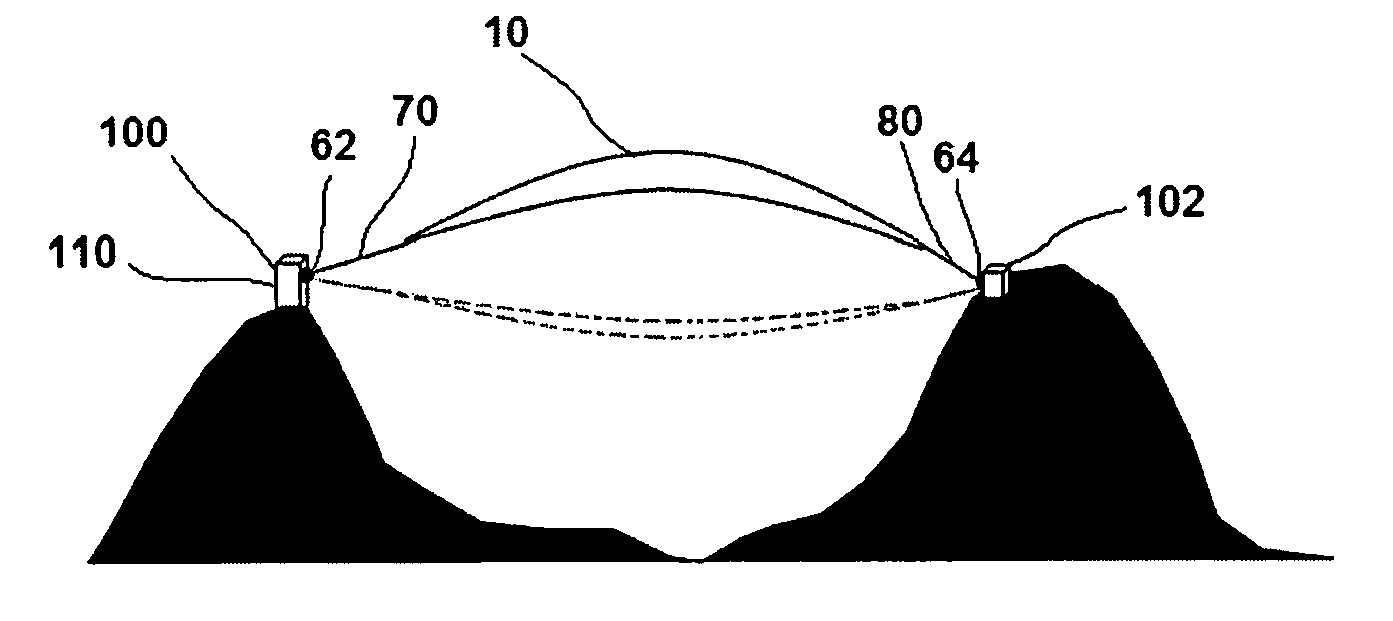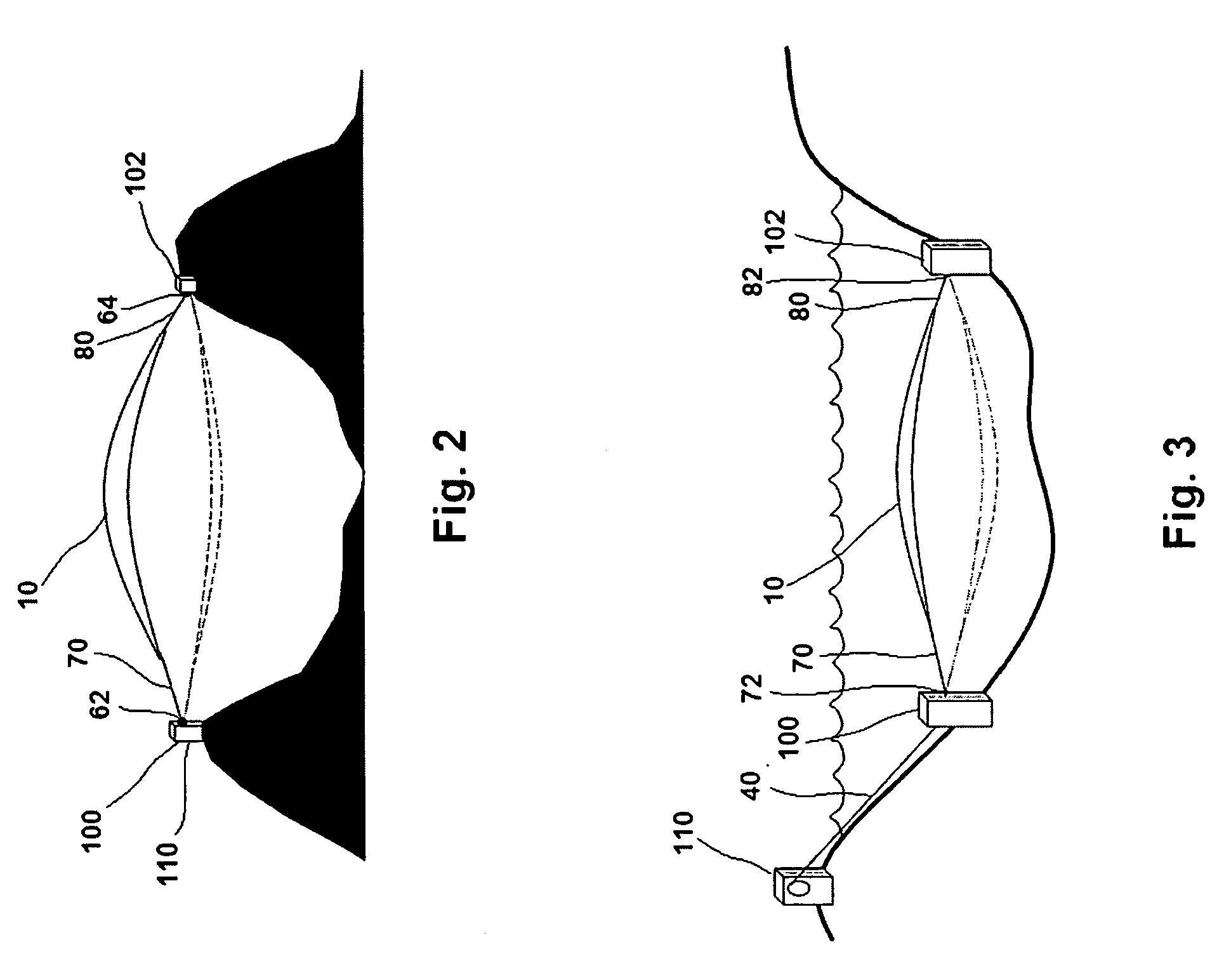Rotating flexible wing power system
a flexible wing and power system technology, applied in the field of aeropower and hydropower, can solve the problems of difficult access to the system and generator, large capital costs for construction, operation and maintenance, and inability to easily position the blades for maximum angle of attack, so as to ensure the safety of generating power and optimize the effect of mass distribution
- Summary
- Abstract
- Description
- Claims
- Application Information
AI Technical Summary
Benefits of technology
Problems solved by technology
Method used
Image
Examples
Embodiment Construction
Overview
[0042]Turning now descriptively to the drawings, in which similar reference characters denote similar elements throughout the several views, the figures illustrate a single long flexible wing 10 supported at its ends 12,14 so that it can rotate or swing around a central axis 18. See FIGS. 1A and 1B. Rotation mechanisms 62,64 are located at each end 12,14 of the wing 10 allowing the wing 10 to rotate freely. One or both ends 12,14 of the wing 10 may be connected to tethers 70,80 interposed between the main portion of the wing 10 and the rotation mechanisms 62,64. Energy is extracted from the longitudinal oscillations as the wing 10 rotates in a flowing fluid like air, either directly or through a force transfer member 40 to a generator 110 or pumping device positioned at a convenient location. The device is thus seen to efficiently convert rotational energy to linear energy.
Long Flexible Wing
[0043]The long flexible wing 10 is designed to withstand large tensile, oscillating, ...
PUM
 Login to View More
Login to View More Abstract
Description
Claims
Application Information
 Login to View More
Login to View More - R&D
- Intellectual Property
- Life Sciences
- Materials
- Tech Scout
- Unparalleled Data Quality
- Higher Quality Content
- 60% Fewer Hallucinations
Browse by: Latest US Patents, China's latest patents, Technical Efficacy Thesaurus, Application Domain, Technology Topic, Popular Technical Reports.
© 2025 PatSnap. All rights reserved.Legal|Privacy policy|Modern Slavery Act Transparency Statement|Sitemap|About US| Contact US: help@patsnap.com



